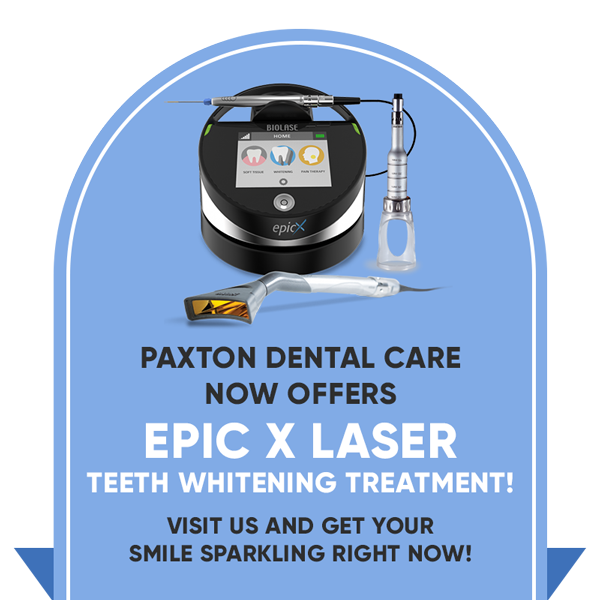Bright White Smiles
There’s no doubt that the past decade has seen a greater emphasis on brighter, whiter smiles. In the realm of teeth whitening, there are in-office treatments, at-home treatments, toothpastes, mouthwashes and even gum brands claiming to help whiten teeth, but what’s the best treatment for you?
In-office procedures: A common in-office whitening procedure involves custom-made trays that fit the shape of your teeth. The trays are filled with a bleaching solution and are placed on your teeth. Once the trays are created, this procedure can be taken home to complete. To speed up the process at the office, a light or heat source may be used in conjunction with the whitening trays.

At-home procedures: There are several types of home whitening procedures. Whitening strips are very common and are usually applied to the teeth once a day for about an hour, depending on the strength of the whitening agent. The whitening strips come in packs of two- one for your top teeth and one for the bottom. The strips should be made of polyethylene and should not contain chlorine dioxide, which can damage the enamel.
Another common at-home whitening procedure is the whitening tray kit. These kits are similar to the in-office procedure, but the trays are not customized to your teeth and may cause irritation to the gums. This product is usually used twice a day for two weeks.
Toothpastes and mouthwashes can also be used to help brighten your smile. Whitening toothpaste will usually contain a mild abrasiveness to remove surface stains. Whitening mouthwash contains whitening agents like hydrogen peroxide and helps whiten teeth gradually.
Whitening gum has gained popularity as well. Gum does not produce the whitening effects typically seen by in-office procedures or whitening strips, but whitening gums do have abrasive agents that help removed surface stains and helps prevent cavities by aiding in the removal of plaque.
All whitening products should contain the Dental Association (ADA) seal of approval on the outside of the package. Most at-home and in-office whitening products will contain hydrogen peroxide or carbamide peroxide, both bleaching agents. These ingredients may cause sensitivity to the teeth and gums.
And if you want to prevent further teeth staining? Continue brushing and flossing daily, drink water between each meal, and try drinking beverages through a straw. Cigarettes, coffee, and red wine all cause discoloration of teeth. Aging is also a contributing factor. Before trying out a whitening procedure, talk to your dental hygienist about your options and to see if you’re a candidate for whitening.



